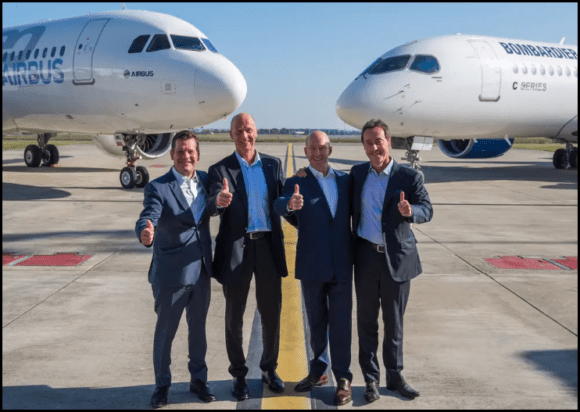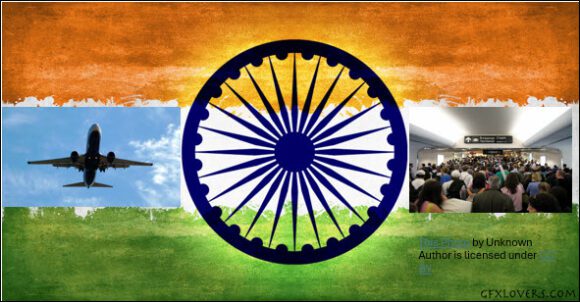
IndiGo 1000th A320 family 1 scaled
As IndiGo turned 19 this month, it avoided making a big splash—possibly out of respect for the mood in the aviation sector following a fatal Air India crash in June. Instead, it marked the occasion with a subdued lean-season promotion it called “IndiGo Day.” But while the public celebrations were modest, there’s a quiet storm of change underway inside India’s largest airline. And by the time IndiGo turns 20 next year, it is likely to look very different from what it has been so far.
LCC to Hybrid
Firstly, the airline has already signaled that it moved past the conventional low-cost carrier (LCC) model some time ago. The push now is toward becoming a hybrid airline, testing premium products while retaining cost discipline. A significant step in that direction is IndiGo Stretch, its new business class offering launched on the Airbus A321neo fleet. Nearly 45 of these aircraft are being inducted back-to-back this year. Stretch was initially introduced on key domestic metro routes, especially the high-frequency Delhi–Mumbai corridor. Still, for reasons that may include higher appetite and better margins, the airline is now shifting focus to short-haul international routes. In the coming weeks, IndiGo will launch Stretch on flights to Dubai, Singapore, and Phuket, among others.
International
Secondly, IndiGo is going all-in on long-haul international flying. It has begun deploying leased Boeing 787-9 Dreamliners fitted with business class seating and full meal service—features that do not exist on its narrow-body fleet. The airline launched Amsterdam flights last month and will ramp up frequencies to six times a week in September and daily by October. It also plans to increase services to Manchester and will add new destinations, including London and Copenhagen, during the winter schedule. Five additional Dreamliners are expected this financial year, with the next one scheduled to arrive by mid-September.
A321XLR
Thirdly, beyond the Boeing widebodies, IndiGo’s incoming Airbus A321XLRs are expected to open up a new category of non-stop medium-haul international routes that have traditionally been unviable for Indian carriers. The first of these aircraft is expected to arrive this fiscal year. With a range of around 4,700 nautical miles, the XLR will allow IndiGo to fly directly to new destinations such as Athens, Seoul, Nairobi, and Denpasar (Bali)—markets previously unreachable with narrow-body economics. The airline has 69 A321XLRs on order, and these aircraft are expected to be pivotal to its international expansion strategy.
As brokerage firm ICICI Securities noted in a 4th August report, “The combination of business class introduction, loyalty programme, accelerated long-haul foray with wide-body aircraft and induction of XLR underline possible new market/segment opportunities; further, highlighting that the twin strategies of internationalisation and premiumisation are firmly underway, and perhaps even picking up pace.” The firm raised its 12-month target price on IndiGo by 15% (from current levels) to ?6,680, citing a strong macro opportunity and potential for continued substantial annual profits in the coming years.
Air India Distracted
Fourthly, IndiGo’s international push has also benefited from the relative pause taken by its main competitor, Air India, in recent months. The June crash involving an Air India Dreamliner has forced the Tata Group-owned airline into crisis management mode, diverting attention away from expansion to regulatory and operational reviews. While Air India still has a widebody pipeline, it lacks the near-term aircraft inflow that IndiGo enjoys, giving the latter a temporary but crucial head start in long-haul international markets. IndiGo, while facing its supply chain challenges, continues to induct aircraft, albeit at a slower pace than last year.
Strong Financials
Fifth, while long-haul flying is widely regarded as a high-risk, long-gestation business, IndiGo has a key advantage: its balance sheet. The airline sits on free cash reserves of nearly $4 billion, and has generated close to $2 billion in net profit over the last two fiscal years. In Q1 FY26 alone—despite major disruptions from India–Pakistan geopolitical tensions, temporary airspace bans, Iran–Israel rerouting, and the fallout in demand from the Air India tragedy—IndiGo still posted a profit of approximately $250 million. That financial buffer gives the airline the flexibility to absorb initial losses on new international routes while building brand trust and loyalty in unfamiliar markets.
All of this suggests that by the time IndiGo celebrates its 20th anniversary in 2026, it will be a radically transformed airline, no longer defined by the budget-only playbook it followed for most of its existence. Its operational focus will be far more global, its passenger proposition more premium, and its network deeper and longer-haul than ever before.
And perhaps, when it turns 20 next year, the celebrations will be less quiet and more befitting of an airline taking its place on the world stage.
Views: 247



